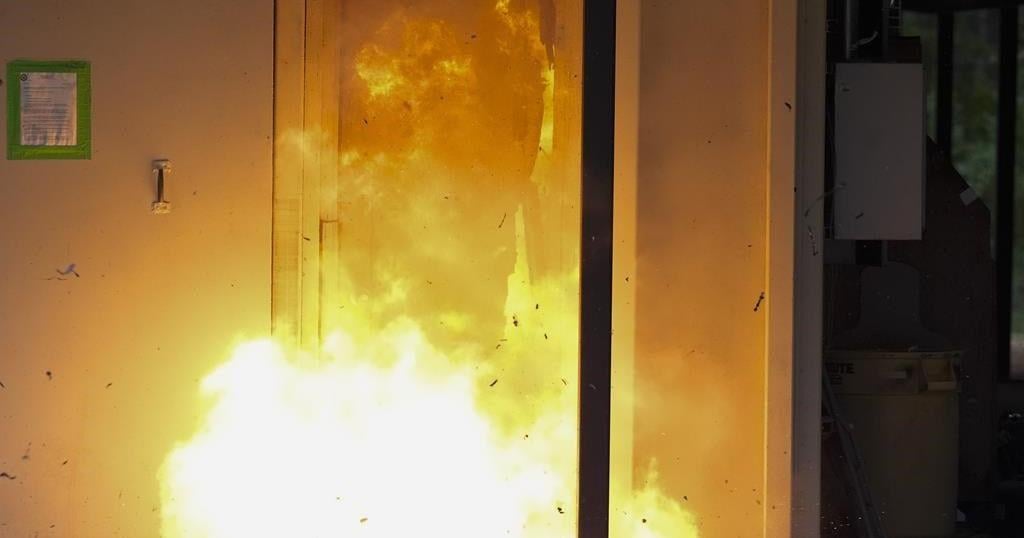Montreal police are investigating after electronic message boards at two road construction sites in Montreal displayed pro-Palestinian political slogans Wednesday morning instead of usual traffic alerts.
The message boards that normally advise motorists of roadwork were tampered with to display phrases such as “free Palestine,” “escalate now,” and “globalize the intifada.” By the end of the morning, the original messages had been restored at the sites.
Intifada, which means “shaking off” in Arabic, was coined to describe an uprising against Israel’s military occupation that erupted in 1987. What became known as the first intifada was marked by widespread Palestinian protests and a fierce Israeli response.
In the second uprising, which began in 2000, Palestinian militants carried out deadly suicide bombings on buses and at restaurants and hotels, eliciting crushing Israeli military reprisals.
Eta Yudin, Quebec vice-president of the Centre for Israel and Jewish Affairs, called the messages on the traffic signs an incitement to violence against Jews because “intifada” refers to terror attacks.
Her organization wants police to investigate what happened and measures to be put in place so it does not happen again. She said “hijacking” signs that are meant to provide safety information to drivers with any kind of political message “raises huge alarm bells as to what these people are willing to do.”
The City of Montreal called the incident an act of vandalism. It said the signs in question belong to a private contractor hired by the city and are the responsibility of the contractor.
City spokesperson Gonzalo Nunez said in an email that padlocks on the signs were broken, allowing someone to program the unauthorized messages. He said that soon after it was noticed, the original messages were restored.
A group called Clash Mtl has claimed responsibility, writing on Instagram that it carried out the act during the night with the goal of showing “solidarity with Palestine.” The group did not respond to a request for comment.
A Montreal police spokesperson said by email that they are aware of the situation and are investigating. The city administration did not immediately respond to a request for comment.
Niall Clapham Ricardo with Independent Jewish Voices disputed that the messages are a call for violence, saying the slogans refer to a desire to end the violence and dispossession of Palestinians in the occupied territories as Israeli strikes continue to claim thousands of lives in Gaza.
Clapham Ricardo says part of the problem is that many wrongfully associate all Palestinian resistance with suicide bombing.
“We have to get out of this binary of freeing Palestine means violence against Jews. It doesn’t, and as long as we see it in that binary there’s always going to be more violence. There’s always going to be more war,” he said.
McGill University political science professor Rex Brynen also says the Arabic word “intifada” does not inherently imply violence or non-violence and should therefore be understood as more of a rallying cry for protest.
This report by The Canadian Press was first published July 24, 2024.

























